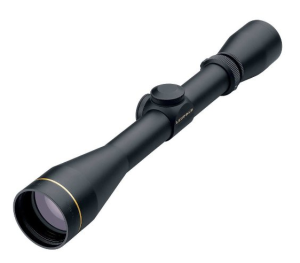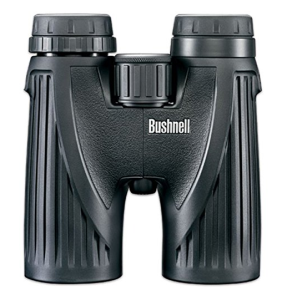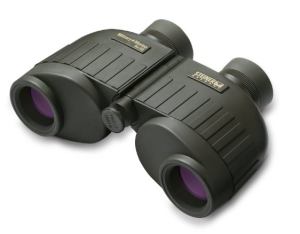Iron sights can be really nice for short and medium ranges, but they quickly lose their ability to hit a target at longer ranges. Using a telescopic scope will dramatically increase one’s accuracy at longer ranges. After all, nobody wants to fire at a target that is 300 yards away using iron sights. Most scopes are not adjusted properly when they are first bought, so additional adjustments will need to be done, depending on distance, velocity, wind, ballistic coefficient and much more. Sighting in a scope requires precision and patience on the shooter’s part.
The scope must first be bore sighted at 100 yards before making any other adjustments at the range. Bore sighting simply means adjusting the scope to where the bullet would hit the center of the cross hairs at a given distance, given the bullet has a perfectly flat trajectory. In reality, bullets do not have a flat trajectory, mainly because of gravity. Once the scope has been bore sighted at 100 yards, take a trip to a shooting range that has a distance of at least 100 yards. Some ranges are only for short distance, so going to an appropriate location in the mountains would be the best alternative. While taking this trip, bring a portable shooting bench rest. Distances should be accurately measured, rather than eyeballed.
First setup a large paper target at a 25 yard distance, preferably one that already has a bull’s eye. Before making any shots, get very comfortable with both the rifle and shooting bench. Any muscle tension or movement can easily throw-off a bullet. The best method is to avoid as much human contact with the rifle as possible. Pillows and folded blankets can make a big difference in comfort-ability. Use sandbags to rest the rifle on the shooting bench. Cat liter bags are a great alternative for those who cannot obtain sand bags.
While looking through the rifle scope, adjust it to where there is a clear image. Interestingly, the level just below the maximum magnification level is usually the clearest. Once a round is chambered and the cross hairs are over the bull’s eye, close the eyes for a good 10 seconds then open them. If the cross hairs moved from the target, then it means that there’s still muscle tension in the shooter. Find a comfortable position and keep doing this until the cross hairs don’t move.
Finally, fire a shot into the target once everything is lined up. It’s important to gently pull the trigger rather than suddenly tug it. Tugging at the trigger can throw off a shot. If the rifle moved while firing, then do it again. After firing a well-aimed shot, inspect the target to see where the bullet went. Sometimes, a person may be able to see the bullet hole through their scope, but they should definitely see it through a spotter scope. More than likely, the bullet won’t hit dead center on the target. However, it should hit somewhere on the target. Measure where the bullet hole is in respect to the bull’s eye and write it down. For instance, a miss that is three inches low and two inches to the right.
To make up for this, adjust the clicks on the scope according to the instructions. For an example, if it says that one click moves the center one-fourth of an inch at 100 yards, then multiply the number by four since the distance is only 25 yards. In the case where the bullet hit three inches low and two inches to the right, the person would want 48 clicks up and 32 clicks left. After everything is adjusted, take another shot at the target. Keep repeating this process until the bullet hits the center of the target. However, it doesn’t have to be a dead-center shot since the next step will be at 100 yards. If for some reason the bullet keeps missing the target, make sure that the scope is tightly mounted on the rifle, as this can dramatically affect shot placement.
Once everything is aligned at 25 yards, move the paper target out to 100 yards. Again, it’s important to actually measure it with some type of device. Repeat this very same process at the 100 yard mark, but wait until the rifle barrel has cooled down to ambient temperature, as barrel temperature may affect accuracy by causing more barrel harmonics. Wind is another factor to take into consideration. However, wind is a changing variable, so it would be wise to write down the click adjustments when there’s no wind. Doing so will allow one to easily adjust the scope while wind factors change.
For really long-range shooting, it’s best to have the bullet impact around three inches above the bull’s eye. This higher impact point will compensate for the bullet drop at longer distances, such as 300 or more yards. It also prevents the shooter from having to aim above the target. Keep in mind that different ammunition will give different trajectories. For instance, a lighter, faster bullet will have a flatter trajectory at relatively shorter distances but lower trajectory at longer distances. On the other hand, a heavier, slower bullet will have a lower trajectory at shorter distances but a flatter trajectory at longer distances.
In general, it’s best to stick with one particular type of ammunition, whether it’s factory or reloaded ammunition. Keeping one type of ammo will allow one to fine tune their accuracy. Once everything is adjusted, one will be able to shoot long distances without having to worry much about bullet drop. A scope has two main advantages. It allows one to see objects at longer distances in much greater detail. Two, it allows the person to compensate for bullet drop, which can’t accurately be done with iron sights. Keep in mind that scope adjustments are mainly up to the person’s liking. For instance, one doesn’t necessarily need to have the bullet impact a few inches higher at 100 yards.
If you want to see some videos of experts showing the rifle scope sight in process, here are some recommended ones to watch:

 The old rule of thumb suggesting that one should invest as much in his optic as his rifle has been known to bewilder many a shooter. Not the least of these are the wise folks who have laid down a moderate amount of cash and walked away with a scope as impressive as the
The old rule of thumb suggesting that one should invest as much in his optic as his rifle has been known to bewilder many a shooter. Not the least of these are the wise folks who have laid down a moderate amount of cash and walked away with a scope as impressive as the  Bushnell’s Legends have always stood out as some of the best binoculars in the market, and the new HD version has helped to add some extra punch to this venerable line of binoculars. The
Bushnell’s Legends have always stood out as some of the best binoculars in the market, and the new HD version has helped to add some extra punch to this venerable line of binoculars. The  Modeled after the very binoculars Steiner provides for the military,
Modeled after the very binoculars Steiner provides for the military,